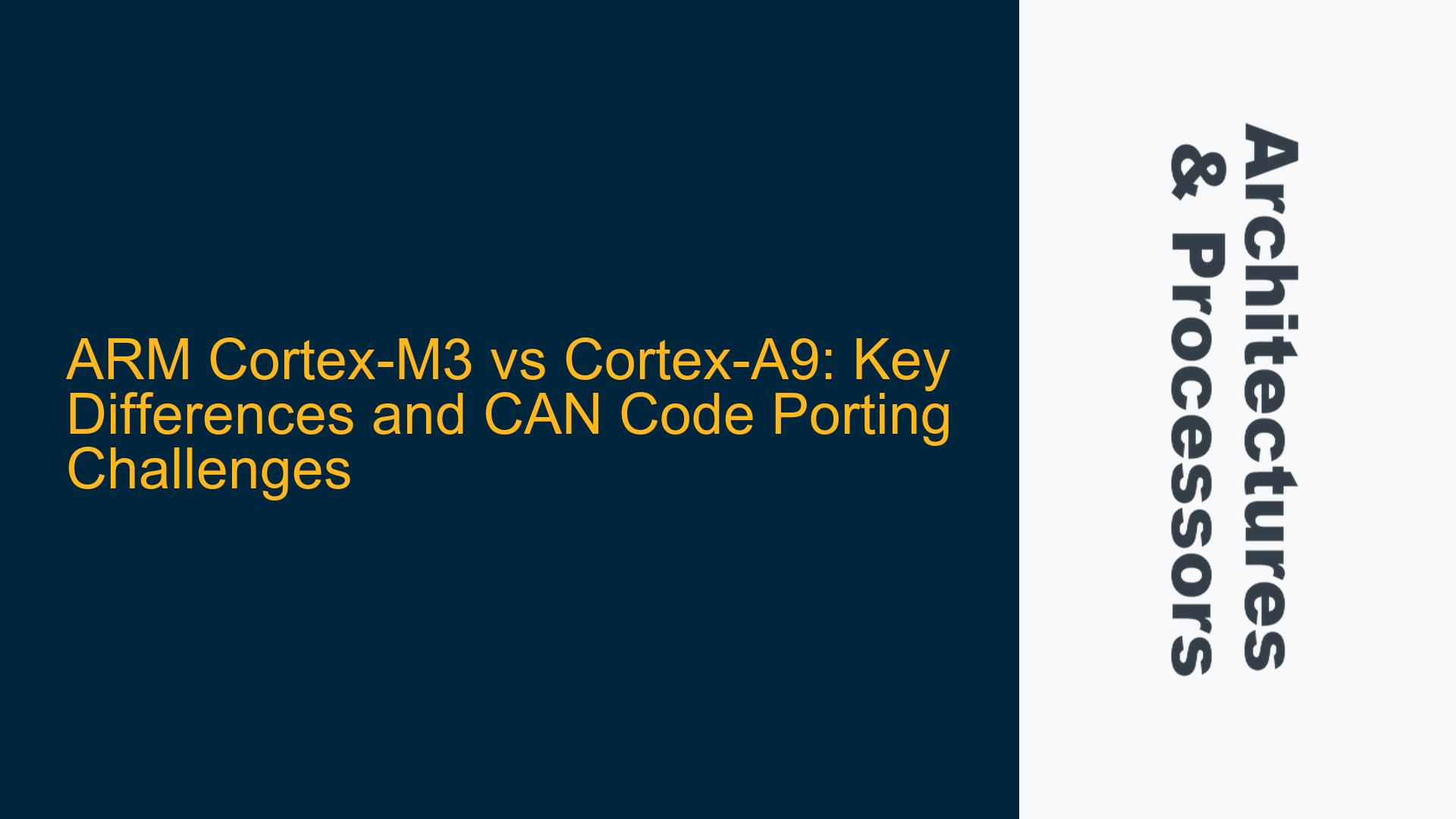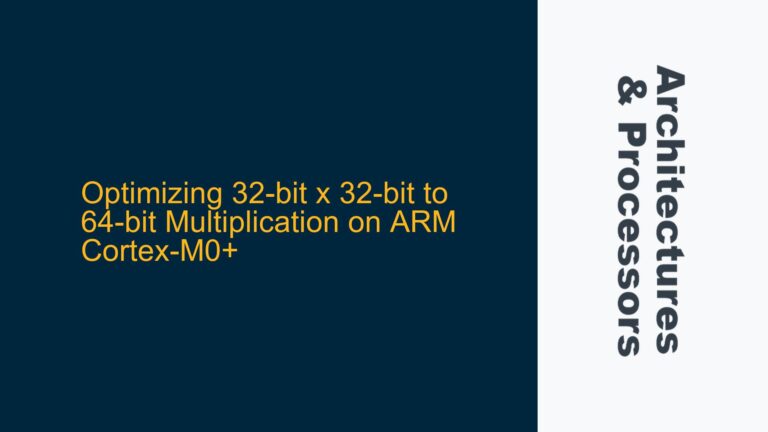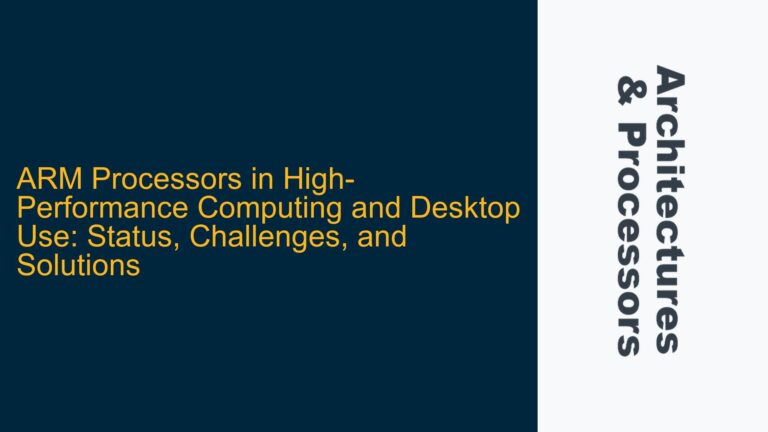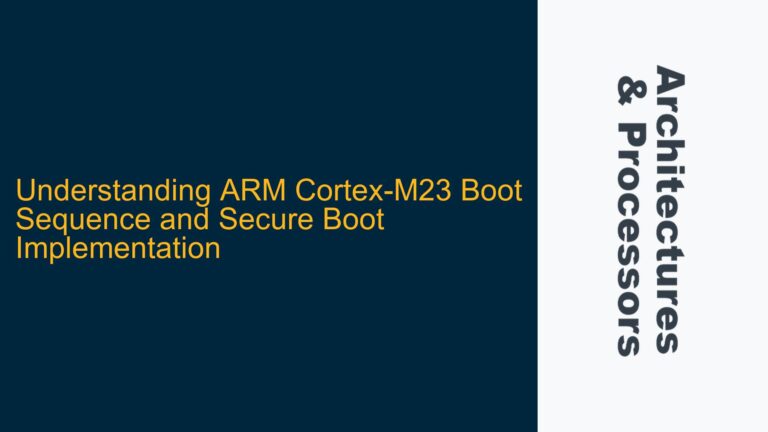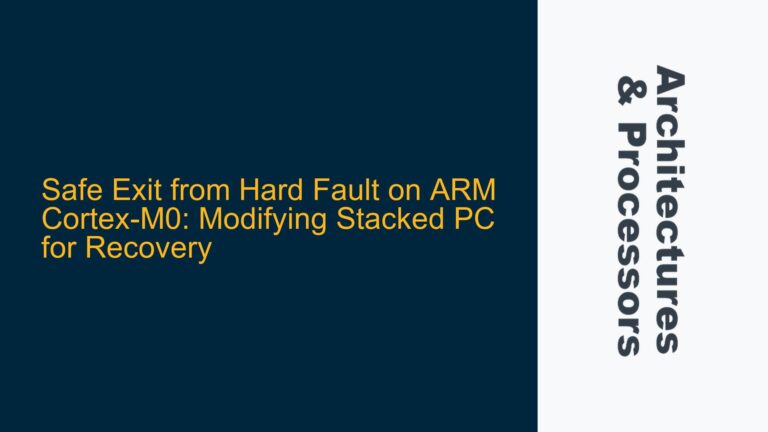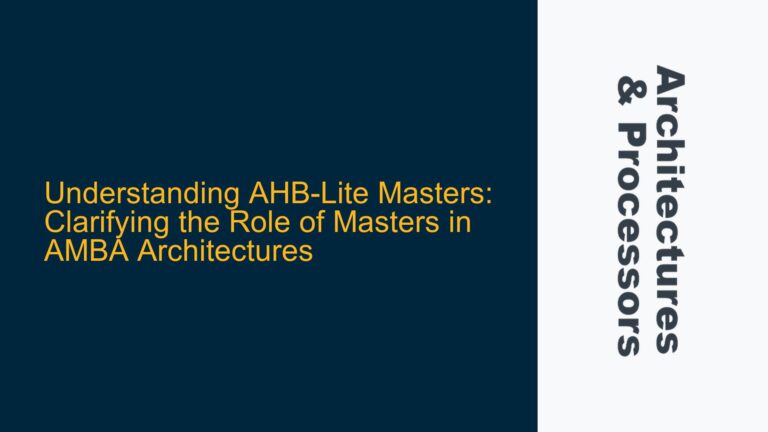ARM Cortex-M3 and Cortex-A9 Architectural Divergences
The ARM Cortex-M3 and Cortex-A9 processors, while both based on the ARMv7 architecture, are designed for fundamentally different use cases, leading to significant architectural differences. The Cortex-M3 is part of the Cortex-M series, which is optimized for microcontroller applications, emphasizing low power consumption, deterministic behavior, and real-time performance. In contrast, the Cortex-A9 belongs to the Cortex-A series, targeting high-performance applications such as smartphones, tablets, and embedded Linux systems, with features like out-of-order execution, advanced memory management, and multi-core support.
One of the most critical differences lies in their memory models. The Cortex-M3 employs a simplified memory model with a Memory Protection Unit (MPU), which provides basic memory region protection but lacks the sophisticated virtual memory capabilities of the Cortex-A9. The Cortex-A9, on the other hand, includes a Memory Management Unit (MMU), enabling full virtual memory support, which is essential for running operating systems like Linux that require memory paging and address translation.
Another key distinction is the execution model. The Cortex-M3 is designed for in-order execution, meaning instructions are executed in the order they are fetched, which simplifies the pipeline and reduces power consumption. This is ideal for real-time systems where deterministic timing is crucial. The Cortex-A9, however, supports out-of-order execution, allowing it to reorder instructions dynamically to improve performance, albeit at the cost of increased complexity and power consumption.
The register sets of the two processors also differ significantly. The Cortex-M3 has a smaller, more streamlined register set tailored for efficient interrupt handling and low-latency context switching, which is critical in real-time applications. The Cortex-A9, with its focus on high performance, has a more extensive register set, including additional registers for floating-point operations and SIMD (Single Instruction, Multiple Data) processing, which are not present in the Cortex-M3.
CAN Code Porting Challenges Between Cortex-M3 and Cortex-A9
Porting CAN (Controller Area Network) code from an ARM Cortex-M3 to a Cortex-A9 presents several challenges due to the architectural differences outlined above. The CAN protocol itself is not inherently tied to the processor core but is typically implemented as part of the System-on-Chip (SoC) peripherals. However, the way the CAN controller is accessed and managed can vary significantly between the two architectures.
One of the primary challenges is the difference in memory addressing and access mechanisms. The Cortex-M3 uses a flat memory model with a single address space, making it straightforward to access peripherals like the CAN controller directly through memory-mapped I/O. The Cortex-A9, with its MMU and virtual memory, requires careful configuration of memory mappings to ensure that the CAN controller’s registers are accessible to the application code. This often involves setting up the MMU to map the peripheral’s physical addresses to virtual addresses that the application can use.
Another challenge is the difference in interrupt handling. The Cortex-M3 is designed for low-latency interrupt handling, with a Nested Vectored Interrupt Controller (NVIC) that allows for fast and deterministic response to interrupts. The Cortex-A9, while capable of handling interrupts, typically relies on a more complex interrupt controller (such as the Generic Interrupt Controller (GIC)) that may introduce additional latency. This can affect the timing of CAN message processing, particularly in real-time applications where timely response to CAN messages is critical.
The execution model differences also play a role in code porting. The Cortex-M3’s in-order execution ensures that instructions are executed in a predictable manner, which can be important for timing-sensitive CAN communication. The Cortex-A9’s out-of-order execution, while improving overall performance, can introduce variability in instruction timing, potentially affecting the timing of CAN message transmission and reception. This may require additional synchronization mechanisms to ensure that CAN communication remains reliable.
Strategies for Successful CAN Code Porting and Optimization
To successfully port CAN code from an ARM Cortex-M3 to a Cortex-A9, several strategies can be employed to address the architectural differences and ensure reliable operation.
First, it is essential to carefully configure the Cortex-A9’s MMU to map the CAN controller’s registers into the application’s address space. This involves setting up the appropriate page tables and ensuring that the memory mappings are consistent with the CAN controller’s physical address range. It may also be necessary to configure the MMU to mark the CAN controller’s memory region as non-cacheable to prevent caching issues that could lead to data corruption.
Second, the interrupt handling mechanism must be adapted to the Cortex-A9’s architecture. This may involve configuring the GIC to prioritize CAN-related interrupts and ensure that they are handled with minimal latency. Additionally, the interrupt service routine (ISR) for the CAN controller may need to be optimized to account for the Cortex-A9’s out-of-order execution, potentially using memory barriers or other synchronization techniques to ensure that critical sections of the ISR are executed in the correct order.
Third, the timing of CAN message processing must be carefully managed to account for the Cortex-A9’s out-of-order execution. This may involve using hardware timers or other mechanisms to ensure that CAN messages are transmitted and received at the correct times. In some cases, it may be necessary to disable out-of-order execution for specific sections of code that are particularly timing-sensitive.
Finally, it is important to thoroughly test the ported CAN code on the Cortex-A9 to ensure that it operates reliably under all expected conditions. This includes testing under different load conditions, with varying levels of interrupt activity, and in the presence of other system activities that could affect the timing of CAN communication. Any issues identified during testing should be addressed through further optimization and tuning of the code.
In conclusion, while porting CAN code from an ARM Cortex-M3 to a Cortex-A9 presents several challenges due to the architectural differences between the two processors, these challenges can be overcome with careful planning and optimization. By addressing the differences in memory management, interrupt handling, and execution timing, it is possible to achieve reliable and efficient CAN communication on the Cortex-A9, leveraging its advanced features to enhance overall system performance.
